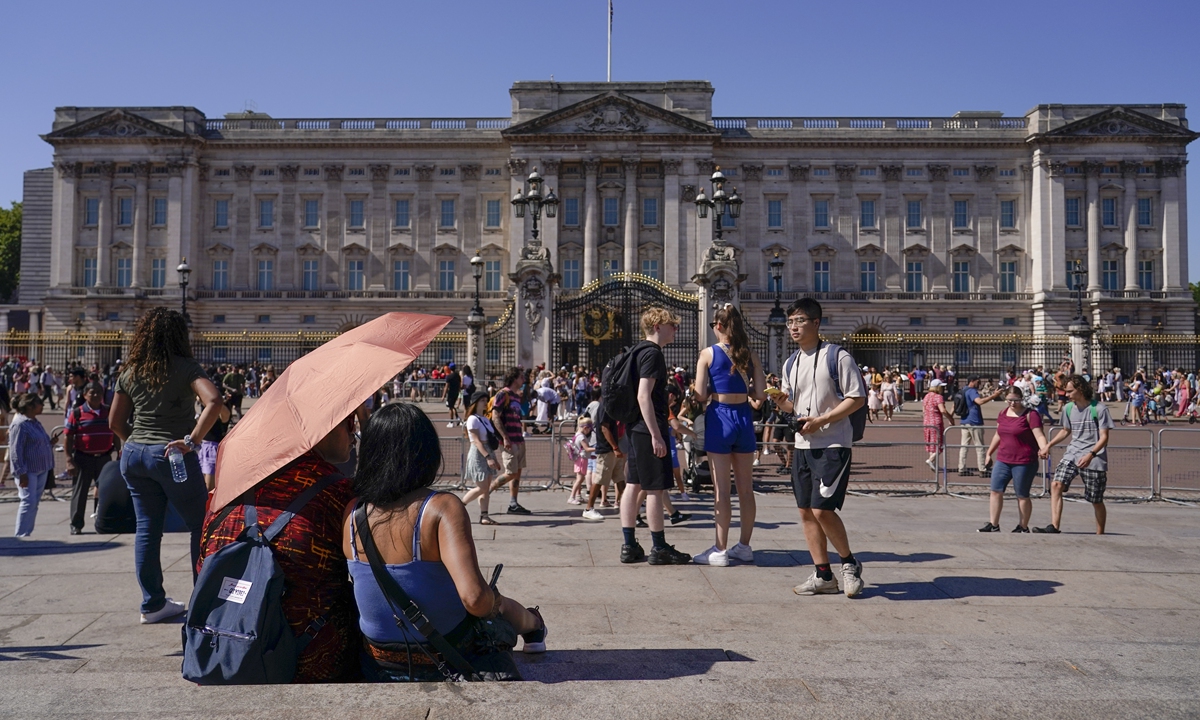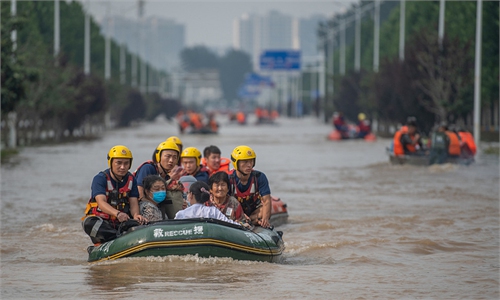
Tourists shelter from the sun under an umbrella as they sit on the stairs of Queen Victoria Memorial in London on August 11, 2022. Heatwaves and prolonged dry weather are damaging landscapes, gardens and wildlife, the National Trust has warned. Britain is braced for another heatwave that will last longer than July's record-breaking hot spell, with highs of up to 35 degrees Celsius expected next week. Photo: VCG
Britain's National Trust on Wednesday said nature and wildlife at the charity's sites had been harmed by extreme weather in the past year and warned it could become the "new normal."
The heritage conservation charity's climate change adviser Keith Jones said it was a "stark illustration of the sort of difficulties many of our species will face if we don't do more to mitigate rising temperatures."
"We're going to experience more floods, droughts, heat waves, extreme storms and wildfires - and they will go from bad to worse, breaking records with ever alarming frequency if we don't limit our carbon emissions," he said.
The planet currently remains off-track from an ambition set by the Paris climate accord in 2015 to limit warming to 1.5 C above pre-industrial levels to avoid the worst effects of climate change.
A cascade of extreme weather exacerbated by climate change devastated communities across the globe in 2022, including sweltering heat and drought across Europe that wilted crops, drove forest fires and saw major rivers shrink to a trickle.
A record warm spell started 2022 with a temperature of 16.3 C recorded in central London on January 1.
Overall, the month was around 0.8 C above the 1991-2020 long-term average.
Storms Eunice and Franklin brought down trees across the country in February.
Spring bird migration was later than usual and swifts returned about two weeks later than normal and in lower numbers.
There were no sightings of toadlets by May as hot weather and lack of rain caused ponds to dry up.
In June, bird flu started to hit many of the seabird colonies on the Farne Islands, off the northeastern English coast, wiping out seabirds that come to the islands to breed, including kittiwakes, shags, gulls and puffins.
At Strangford Lough in Northern Ireland, extreme weather in late June caused multiple tern colonies to fail.
A record-breaking heat wave, peaked at 40.3 C at Coningsby in central England in July as exceptionally dry conditions roared across the south and east and wildfires spread across large parts of the country.
Bats had to be rescued from the heat. Experts suspect the weather impacted the breeding success of many bird species.
In August, newly planted trees failed to take root at some National Trust sites due to prolonged drought and heat. Meanwhile, many places experienced a "false autumn" with trees dropping their leaves early due to drought. Butterfly numbers were also down and bumblebees, hoverflies and flies vanished during the heat wave.
Swallows were still active at Mount Stewart in Northern Ireland in September, a month later than in previous years, and did not migrate until the very end of the month.
Additionally, some wildflowers had a second flowering due to the lack of frost.
In November, winter farmland migrating birds arrived a month late on the Mount Stewart Estate likely due to milder temperatures in northern areas where they spend the summer.

